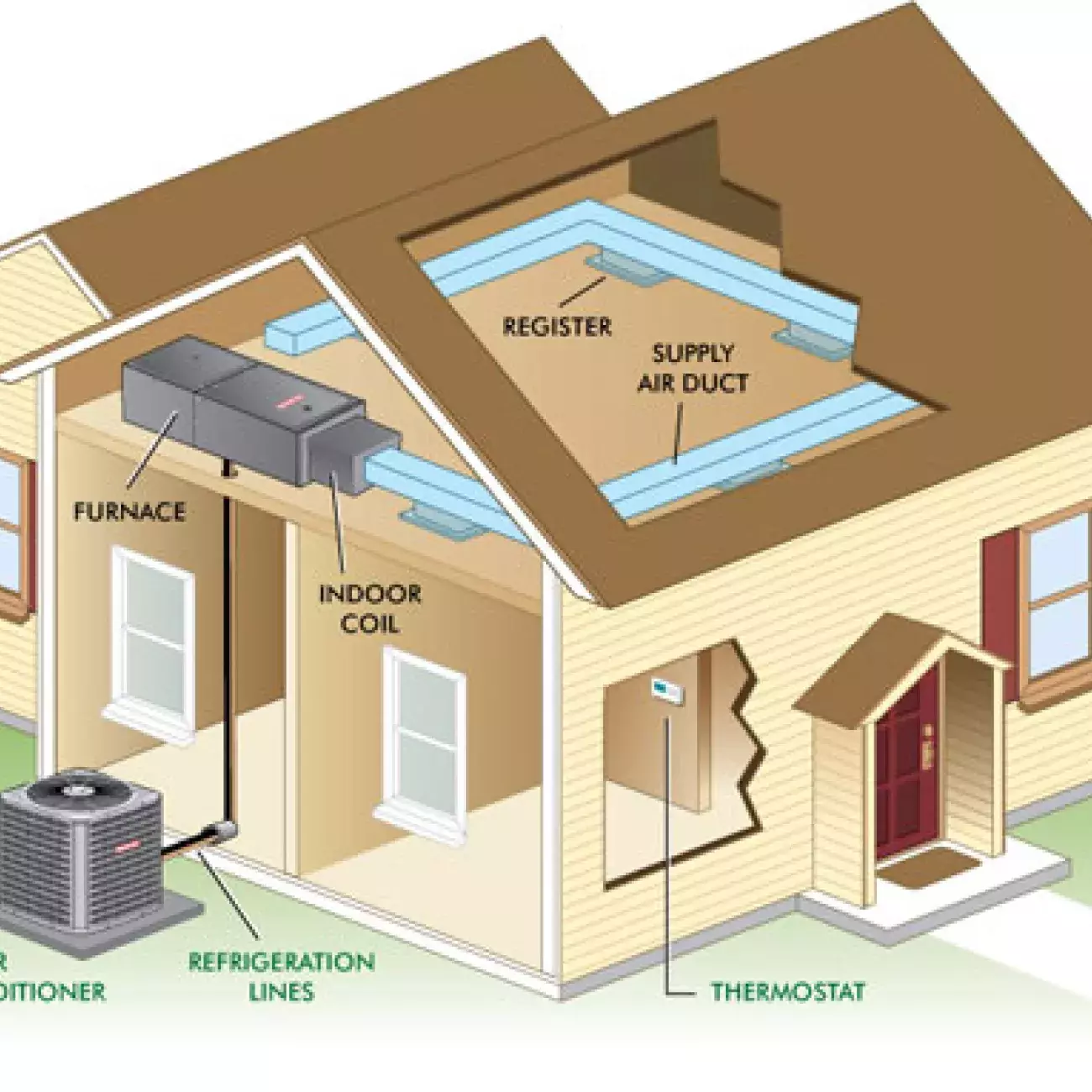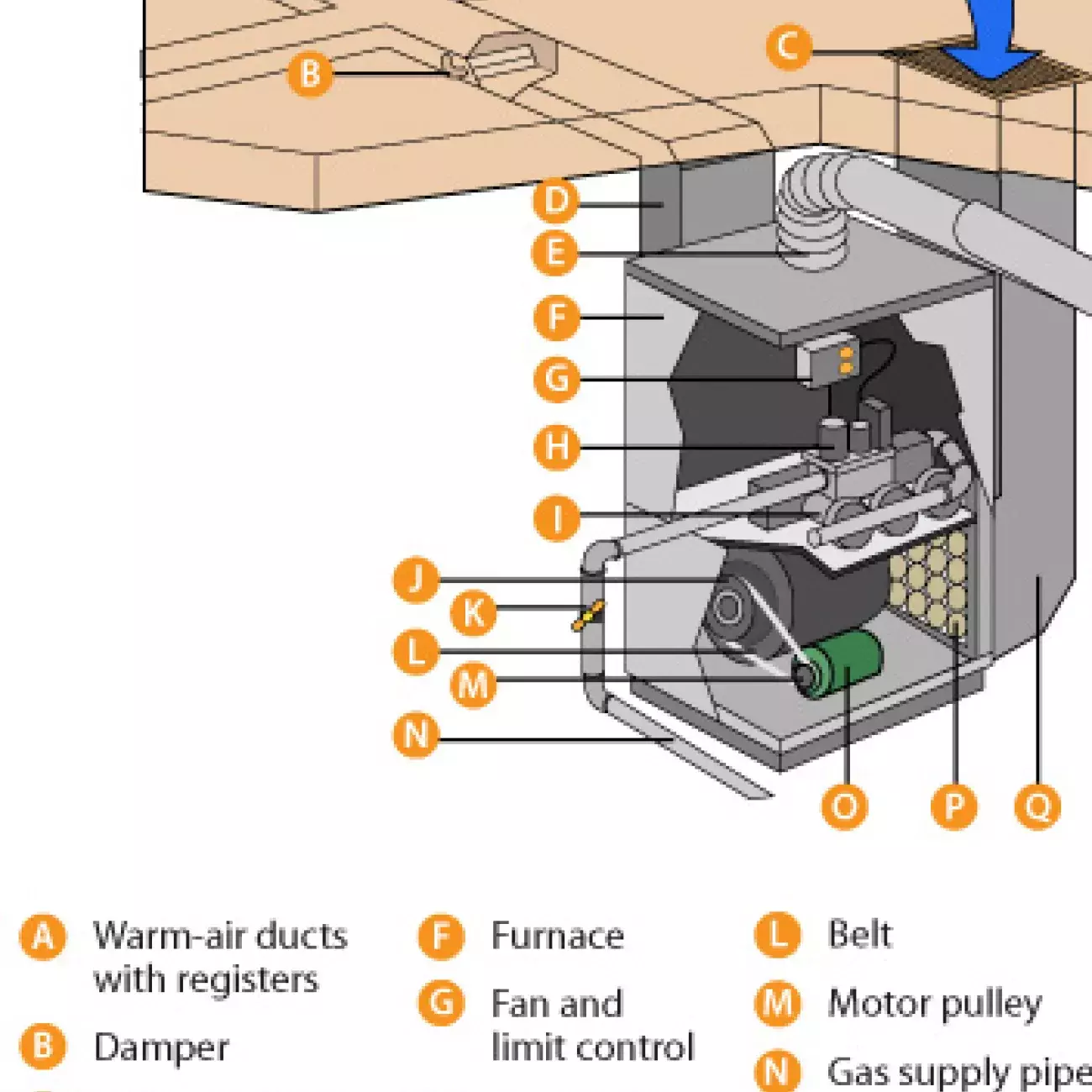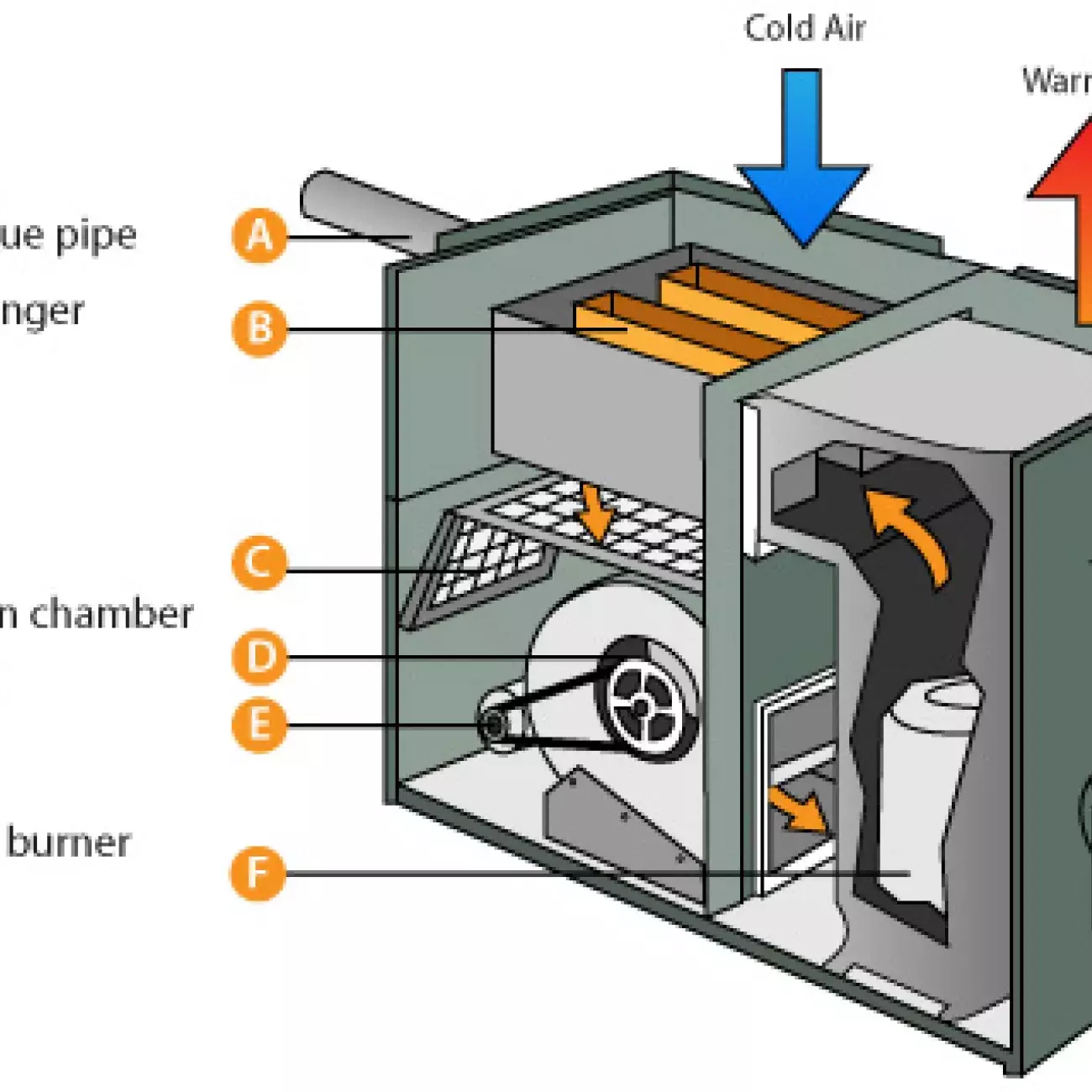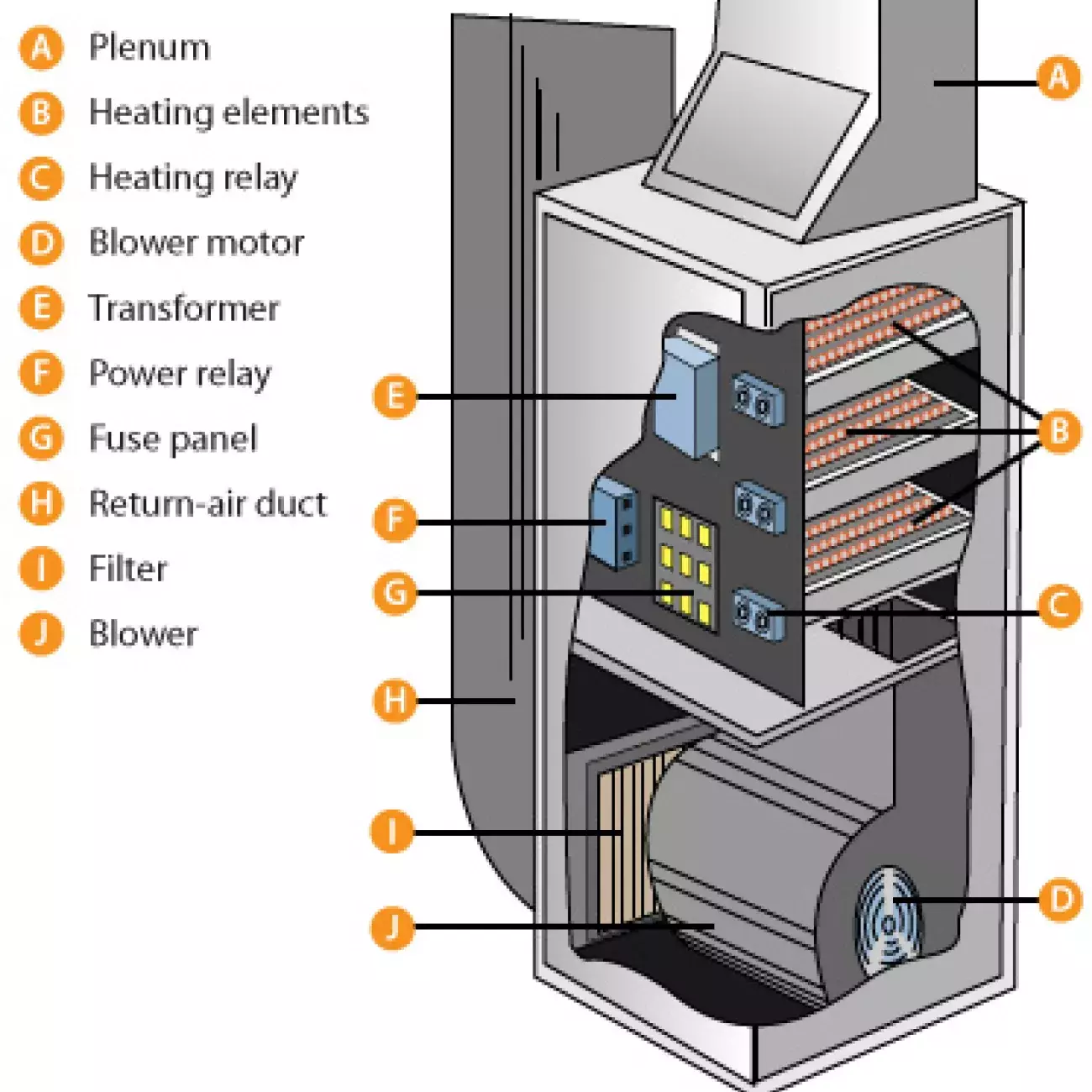Furnaces: How They Work

Before selecting a furnace for your home it is important to understand how they work so you can make an informed decision. A furnace heats your home by pulling cool indoor air into the furnace, heating it and then redistributing the warmed air back into the rooms through ductwork.
Furnaces can be fueled by natural gas, oil, propane, coal, wood or electricity, but most furnaces today use natural gas, oil and electricity and they each have differences in how they work.
Natural Gas Furnace

With a natural gas, forced air heating system, gas is mixed with air inside a burner and ignited inside the combustion chamber. A blower pulls cool air in from the rooms through air ducts in the furnace. The air is heated by passing over a heat exchanger connected to the combustion chamber. Warm air then flows back into rooms through ductwork. Exhaust gases from the burners are vented outside through a flue through the roof, or with some models, through a side wall vent.
Oil Furnace

An oil fired furnace operates in much the same way, except the oil is atomized, or turned into a fine mist, and burned. Air absorbs the heat in the exchanger and a blower sends the warm air back into the rooms through ductwork. Emissions from the burners are then vented outside.
Some homes are equipped with gravity furnaces — typically in basements — which use central heating, but not with forced air and blowers. Instead, the heat naturally rises and heats the rooms through ducts.
Electric Furnace

An electric forced-air furnace uses a blower unit to blow air over electrically-heated coils. The warm air is then distributed through the home through ducts. These units can be used with heat pumps or central air conditioners.